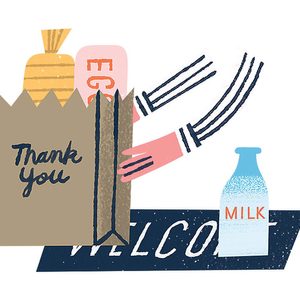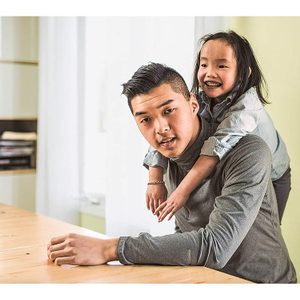How a Chicago Hospital Pulled Off Back-to-Back Triple Organ Transplants
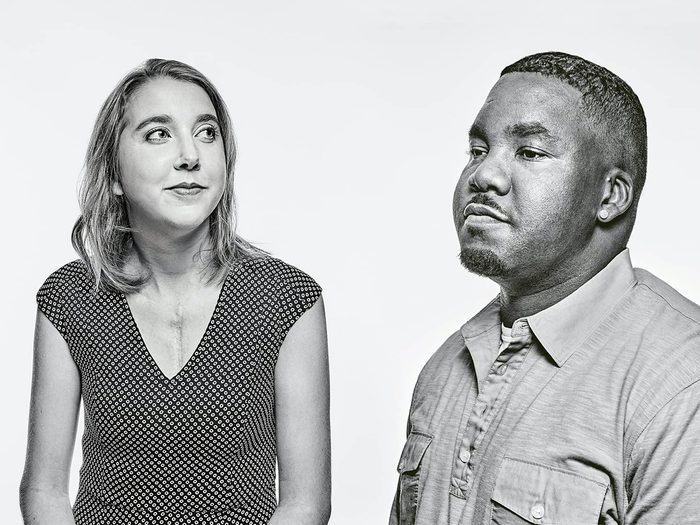
Before 2018, only 15 triple organ transplants—heart, liver and kidney—had ever been performed in the United States. Then, over the course of 48 hours, the team at UChicago Medicine completed two back-to-back.
Daru Smith was talking to his doctor and sister one day in December 2018 when he began to die. He saw their forms grow dim, a dark curtain coming down on them and himself in his fluorescent-lit hospital room at University of Chicago Medicine. Then the 29-year-old was above it all, looking into a hole in the ground where a torrent of water was swirling like a giant draining sink.
And then he was in a hallway. At the end of it glowed a white light. He felt at peace. No more heart palpitations, no flutters, no aches. He saw pictures on a wall. Scenes from his life. His son being born. It felt good, the light. Until Daru realized: This is what happens when you die. He turned around and began to run. The light pulled him. I gotta fight, he said to himself.
Daru had been sick. A few weeks earlier, he’d gone to the emergency room with a cold he couldn’t shake. But tests showed it was much more than that. Daru was in cardiogenic shock, a condition in which the heart can’t pump enough blood to meet the body’s needs. He also had something called sarcoidosis, a rare autoimmune disease that can cause the body to overproduce certain cells that all but shut down organs—in Daru’s case, the heart, liver and kidneys.
That meant Daru needed all three vital organs replaced, a procedure so complex and risky that only 15 had been performed in the United States by that point. He would need the rarest of donors, one with three healthy organs compatible with Daru’s blood type and strong enough to support his nearly two-metre-tall body.
Daru fought the light long enough that his eyes fluttered and opened. “Hey, where’d you go?” said Daru’s cardiologist, Bryan Smith. “Thought we lost you for a second.”
Sarah McPharlin sat in a spare room at UChicago Medicine, waiting to plead for her life. She was there to meet with the centre’s transplant evaluation team.
As different as Sarah was from Daru—she’d grown up in a tree-lined suburb of Detroit, gone to graduate school, travelled the world; he was raised by a mother who managed a Harold’s Chicken Shack in Chicago, where he worked until he found a better-paying job as a truck driver—they were, in more important ways, alike.
Like Daru, Sarah was 29. A rare autoimmune disease—an inflammatory condition called giant cell myocarditis—had attacked her heart. At 12, Sarah had had a heart transplant, but over the years the replacement organ also began to fail. Surgeons had to open her chest five more times to repair ongoing problems. Complications from years of procedures and medications had all but destroyed her liver and kidneys. Her only hope, too, lay in a triple transplant.
But there were some ugly realities that needed to be addressed: The degree of difficulty of a heart transplant doubles with each previous cardiac operation. Sarah’s numerous procedures had left her heart buried in scar tissue. This “hostile” chest, as surgeons call it, makes it harder for them to locate the arteries and veins they will need to disconnect and reattach. What’s more, she was so physically weak that doctors weren’t sure she could survive such a gruelling surgery.
And then there’s the macabre math that goes into such decisions. A triple transplant means using three organs that could potentially save three other patients. Does it make sense to use them on a single long shot?
Dr. Nir Uriel, a heart specialist, was at first skeptical about Sarah’s case. She was as pale as the hospital sheets. She had almost no muscle mass. Her chest seemed to have collapsed in on itself, while fluid swelled her arms and abdomen. She could barely speak a sentence without gasping for breath. But when Uriel asked what she planned to do post-transplant, the words she could get out moved him.
She’d travel, she said, maybe to Europe, where she had visited as a student in high school. She’d restart her career as an occupational therapist. Beyond that? She loved spending time with her family. They were inseparable.
Before the day was out, Sarah had spoken with nearly 30 members of the transplant evaluation team. Afterward, they unanimously voted to move forward, each one seeing what Uriel had seen: someone who, though facing death, radiated life.
For both Sarah McPharlin and Daru Smith, it was now a waiting game. Waiting for organs to become available. Waiting, to put it in blunt terms, for the right person to die.
But at their darkest point, a bright spot flickered: The two patients, just two doors apart in the ICU, met. Over the following weeks, a bond developed. Sarah and Daru compared notes as they walked laps around the floor together, challenging each other on how many trips they could make, laughing at what they must look like in their gowns, with tubes and machines trailing behind. Their go-to phrase became “You got this.”
At 3:15 p.m. on Tuesday, December 18, 2018, Jamie Bucio, lead coordinator of UChicago Medicine’s organ procurement team, felt her pager buzz with an alert. A potential match for Daru had been declared brain-dead. The young man’s heart, liver and kidneys were intact and strong, and his family had agreed to donate the organs. Bucio and her five-person team had one hour to respond with a preliminary acceptance of the organs—otherwise they would go to the next patient on the waiting list.
Every moment of that hour was crucial. First, Bucio collected information on the organs: What kind of shape were they in? Were they good matches? Then she and her team alerted the surgeons and the attending physician, sending them medical records of the intended recipient.
Bucio called the attending physician: “Tell Daru it’s time.”
“You ready?” Dr. Smith asked Daru as he walked into his room.
“For what?”
“Are you ready?” he repeated, smiling.
Now Daru smiled, too, the realization dawning on him.
On most days, the white-tiled hallway just outside of operating room five west is deserted, save for the occasional flock of surgeons, nurses and orderlies. But on this day, December 19, just before 3 p.m.—24 hours after Jamie Bucio got the call—an unusually large contingent of 20 medical staff members milled about. The star of the show was the hospital’s head cardiac surgeon, Dr. Valluvan Jeevanandam. He’d be performing Daru’s heart transplant, the initial procedure upon which the other surgeries rested. As Jeevanandam and his team began prepping for the first leg of the marathon surgery, two floors below, Daru was being wheeled away from his ICU room and his family.
Meanwhile, three SUVs carrying the two surgical teams—one for the heart and one for the liver and kidney—raced across the city to retrieve the donor organs. Speed is of the essence. A heart needs to be implanted within six hours—ideally four—of being removed from a donor.
Jeevanandam made his first cut at 3:07 p.m., timing it to when the doctor at the other hospital began removing the donor’s heart. Inserting the rib spreader, a stainless steel retractor used to lay bare the chest cavity, he began to crank slowly. Daru was then hooked up to a heart-lung bypass machine, the major arteries to his heart clamped shut, leaving him without a functioning heart for what would be 102 minutes. Then the removal process began. The donor organ, packed in a Tupperware pickle jar, bathed in a preservation solution, and chilled in a medical box similar to an Igloo cooler, arrived at 5:04 p.m.
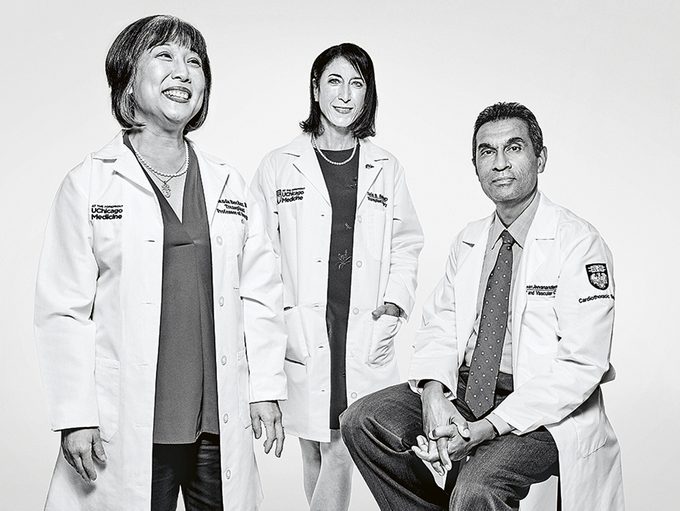
Daru’s sarcoidosis presented a complication for Jeevanandam. A healthy person’s tissue is like supple leather, which helps it fuse when sewn together. Much of Daru’s tissue was more like cardboard, so the doctor had to be extra careful not to rip it while sewing the new heart in place.
That accomplished, Daru was ready to be taken off the bypass machine. In transplant surgery, it’s always a tense moment when the aortic clamp is removed. To preserve a heart for transport, doctors fill it with a solution high in potassium. If all goes well, when the clamp is released, the whoosh of blood into the heart restores normal levels of potassium and other electrolytes, and the heart begins to beat.
But Daru’s heart didn’t beat. Not panicking, Jeevanandam picked up forceps and gently massaged the heart, trying to “tickle” it back to life. Finally, a dot began to hop up from the long, flat green line on the screen across the room. With that, Jeevanandam stepped back. Four hours after beginning the surgery, his part was done. It was 7:00 p.m.
While Jeevanandam’s assistants affixed drainage tubes and packed the area around the heart with gauze to absorb blood, Dr. Talia Baker, the surgeon performing the liver transplant, and her team were setting up.
There are some 180 steps in performing a liver transplant. But Baker’s main challenge with Daru was the state of his liver. A healthy liver has the spongy consistency of a jellyfish, which makes it pliable. A cirrhotic, or scarred, liver like Daru’s is firm, so manipulating it is more difficult, raising the risk of damaging the tissue around the organ while removing it.
With liver transplants, there’s also a fear that the absence of oxygen and nutrient-rich blood can damage the newly transplanted organ once blood flow is restored. That damage can cause the heart and lungs to collapse, resulting in death. In Daru’s case, though, the new liver handled the blood flow as it was supposed to.
At 11:46 p.m.—eight hours and 39 minutes after surgery began—the second portion of his transplant was complete. All that remained: the kidney.
Around that time, Bucio got a page that stunned her: A young woman in another state had been declared brain-dead. She was a potential match for Sarah, and she had three healthy organs. Bucio called Dr. Smith, Sarah’s attending physician: “Well, I guess nobody’s getting any sleep for the next 48 hours.”
No hospital had ever performed two triple transplants within a year, and yet UChicago Medicine was preparing to begin its second in just over a day. Was it even possible? It had to be. The offer of three matching organs simply could not be turned down. Bucio had already started assessing the logistics. Because Sarah’s organs were coming from some distance, UChicago Medicine would need two jets, plus ground transportation to and from both airports.
At 8:18 a.m. on December 20, Daru’s triple transplant was completed. After more than 17 hours in surgery, he was moved back to the ICU. Ten hours later, Sarah’s triple transplant began.
As Jeevanandam had anticipated, the heart portion of Sarah’s surgery required extra care, taking longer than Daru’s. The scar tissue that had built up in her chest from past surgeries made hunting for the arteries and veins seem like an archaeological dig. Just as an archaeologist uses little brushes to carefully clear away dust and debris, Jeevanandam had to use special instruments to tease apart the tissue to find the arteries underneath. A miscalculation of a single millimetre with the scalpel could nick the heart itself.
Sarah’s liver posed special challenges as well. Because she had been on immunosuppressive drugs for most of her life, her tissue was fragile. Baker had to work slowly and precisely, taking painstaking care with each incision and suture.
Dr. Yolanda Becker was last up. And as the final surgeon, she had to not only perform the kidney transplant but make sure the heart and liver were still functioning, which meant keeping a close eye on all of Sarah’s vital signs. She also had to navigate the minefield of drains and chest tubes and pacemaker wires left in place by the previous two surgeons. Dislodge any of the tubes or drains, and she might not notice internal bleeding. Detach a pacemaker wire, and the heart could develop a dangerous arrhythmia without her knowing.
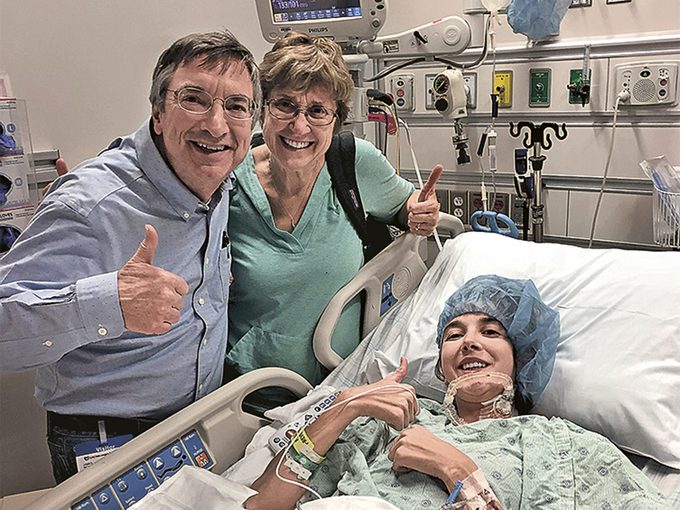
By the time her surgery was finished, at 2:27 p.m. on Friday, December 21, Sarah had been on the table for more than 20 hours. UChicago had accomplished the unthinkable: two triple transplants in less than two days.
Not long after the surgery, Sarah was amazed by how good she felt. Before the transplant, she had gained 45 pounds of water weight. It was nice to have her normal legs again. She’d also felt out of breath and cold all the time, a result of the poor circulation caused by her failing heart. Now she didn’t have to constantly be swaddled in a blanket or coat.
But the two patients’ recoveries were not without complications. Two weeks after the transplant, Sarah registered low magnesium levels, requiring weekly infusions of the mineral, which keeps the heartbeat steady and maintains nerve and muscle functions. She has also struggled with a low white blood cell count, necessitating booster shots. Despite these setbacks, she’s more active than ever. She exercises regularly, works as a dog walker, and last February she participated in Hustle Chicago, a charity stair climb event to the very top of the former John Hancock Building, 94 floors up.
As for Daru, a month after the operation, surgeons placed a stent in one of his bile ducts to open up a blocked passageway. Other than that, he’s been working out and “actually seeing results.”
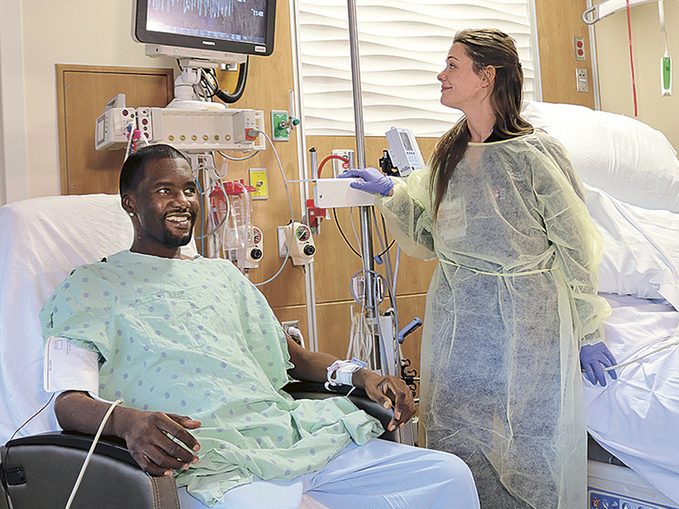
Sarah and Daru had intended to meet up after leaving the hospital, but life and eventually the COVID-19 pandemic conspired against them. Instead, Sarah sends Daru banana bread, and they text each other three to four times a week. They also have a regular group chat with three other triple organ recipients, each of whom had their operations after Sarah and Daru.
Daru often thinks back to that day he finally left the hospital he’d called home for eight weeks. As he was wheeled through the ICU toward the elevator, nurses, doctors and administrative staff clapped and shouted goodbyes.
“You are loved here,” the orderly pushing his wheelchair said.
They turned one corner. And then another. And then they stood looking down a final hallway. At the end of it shone what looked like a bright white light. The orderly pushed him forward. And as he did, the source became clear: a set of white double doors illuminated by bright disks of light in the ceiling. The white grew brighter until Daru was on the other side, where he saw a familiar car and his sister standing beside it, smiling, waiting to take him home to his son.
Next, check out more heart-stopping survival stories.
